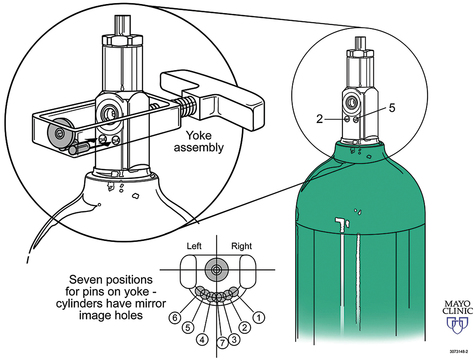Medical gas supply
Medical gases most common to anesthesia include oxygen (O2), nitrous oxide (N2O), and air. Historically the less frequently used medical gases include helium (He), nitrogen (N2), and carbon dioxide (CO2), but there has been a recent surge in the use of CO2 secondary to the advancement of laparoscopic and robotic procedures. Several governing bodies regulate medical gases, but the containment and delivery of these gases via a medical gas cylinder system is controlled via standards set by the United States Department of Transportation. Medical gas cylinders are the foundation for central pipeline supply of gases to the operating room (OR) and hospital. Additionally, a cylinder system (typically the smaller E cylinders) exists in the OR as a backup for unanticipated failure of the central pipeline supply (Figures 1-1 to 1-3).








